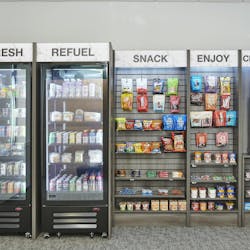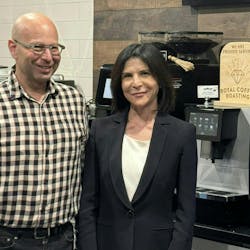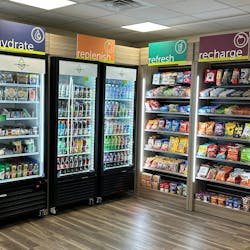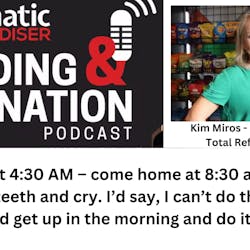Although the traditional industry practice of the past may have been to separate micro market and vending routes, operators are increasingly combining the two in order to increase efficiencies.
VendingMarketWatch.com spoke with Bradlee Whitson, operations manager at K&R Vending in Bridgeton, NJ, about what the impact on his business has been combining micro market and vending routes as well as tips for operators considering making the plunge.
VendingMarketWatch.com: How have vending and micro market routes changed at K&R Vending?
Bradlee Wilson: In vending, we have separate static routes that service our refrigerated cold food machines on static schedules in addition to different routes dynamically servicing the other machines. We have done the same in micro markets. A static route driver services the food coolers on a set schedule and the drink and snack sections of the micro markets are serviced dynamically by different drivers. Those static route drivers have also been charged with the overall responsibility of the micro market. They will check dates, clean the fixtures and straighten up the micro market to help keep appearances up.
Between this and having dynamic drivers do the same for the panels and coolers they are filling, we are actually increasing the number of opportunities per week to reset the market and give a better appearance and experience to our customers.
VMW: Has combining routes saved money?
BW: Yes, combining markets and vending can help to reduce route expenses, especially if you are able to operate the markets dynamically. By dynamically servicing micro markets, we are finally able to see some of the same operational efficiencies we have been seeing for years in vending.
VMW: What challenges does combining routes present?
BW: Training your drivers is critical. It is necessary for drivers to have some basic understanding of merchandizing to properly fill the micro markets. While filling a vending machine is fairly straight forward, there is more consciousness needed with micro markets so that dates are rotated properly and products look good on the shelves and in the coolers.
VMW: How do you train staff when combining routes?
BW: We had members of our management team who had worked with and trained our micro market drivers ride along with our vending drivers who were going to be servicing markets. This both allowed them to build a rapport as well as have our managers begin to share some of the differences in filling markets and vending. Then we had our micro market manager meet the driver for the first few services to help with filling, answer any questions that came up, and provide feedback.
VMW: What opportunities does combining routes offer?
BW: Beyond the operational savings, dynamically scheduling micro markets can lead to better service for our customers. We are able to keep a closer eye on inventory levels in the micro market and schedule service before items run out. Also, by now operating markets through our VMS, we can leverage the data and lessons we have learned in vending to help merchandize micro markets better and tailor par levels to the particular account.
VMW: What advice do you have for an operator considering combining routes?
BW: Preparation is absolutely critical. By putting together an implementation plan, setting new policies and procedures, and properly training drivers, you can help set yourself up for a successful transition. If you jump into it without a plan, you can be setting yourself up for trouble.





